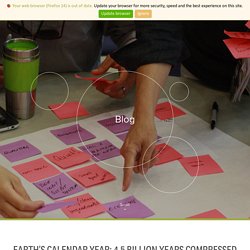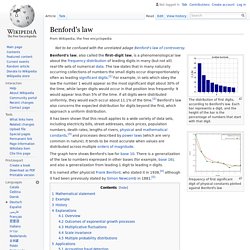

Reference Pieces on Space. One interesting question about the assumptions for Euclid's system of geometry is the difference between the "axioms" and the "postulates.

" "Axiom" is from Greek axíôma, "worthy. " An axiom is in some sense thought to be strongly self-evident. A "postulate," on the other hand, is simply postulated, e.g. "let" this be true. There need not even be a claim to truth, just the notion that we are going to do it this way and see what happens. Given below is the axiomatization of geometry by David Hilbert (1862-1943) in Foundations of Geometry (Grundlagen der Geometrie), 1902 (Open Court edition, 1971). I. Hilbert's Comments: If Archimedes' Axiom is dropped [non-Archimedean geometry], then from the assumption of infinitely many parallels through a point it does not follow that the sum of the angles in a triangle is less than two right angles.
Hilbert's comments should serve to remind us that not only the Parallel Postulate can be denied without contradiction. Philosophy of Science Home Page. Earth’s Calendar Year: 4.5 billion years compressed into 12 months - Biomimicry 3.8. Life has an incredible amount to teach us about living well on planet Earth, in no small part due to the fact that it’s been thriving here for 3.85 billion years.

But, how long is that really? If we take the age of Earth (4.5 billion years) and compress it into one year, we can better grasp the time-tested wisdom of our fellow planet-mates. Earth was “born” on January 1, 4.54 billion years ago. If we compress 4.54 billion years into one year, that means 144 years is 1 second.
Life appeared 3.8 billion years ago. It’s not until July that multi-cellular organisms appear. Earth’s Calendar Year plainly shows our age as a species relative to the much, much older forms of life on Earth. There are 30 million other species on the planet today. There’s no guarantee that we, or any of the other species around us, will remain. Is the Earth here for us? Here’s a look at milestones worth celebrating: Games. Nature's fireworks: the best meteor showers coming in 2015.
Watching meteors in the night sky can be fun, although typically you only see a few flashes an hour.

But there are certain times of the year when you can see many more – events known as meteor showers. These are caused by Earth moving through streams of debris left behind by passing comets and asteroids. Such showers are typically active for several days or even weeks, but usually feature short, sharp climaxes, or “maxima,” with their best rates being visible on just a single night. The coming year promises to be another good one for meteor buffs, so here’s a guide on what to expect and how best to enjoy nature’s own firework displays. Alpha Centaurids: maximum February 8 Click to enlarge Extending from January 28 to February 21, and peaking on February 8, this shower is known for producing brightly coloured fireballs with long-lasting trains varying from a few seconds to several minutes. This year, unfortunately, the moon will greatly hamper observations. Lyrids: maximum April 22. TV Wild. Benford's law. The distribution of first digits, according to Benford's law.

Each bar represents a digit, and the height of the bar is the percentage of numbers that start with that digit. Frequency of first significant digit of physical constants plotted against Benford's law Benford's law, also called the first-digit law, is a phenomenological law about the frequency distribution of leading digits in many (but not all) real-life sets of numerical data. The law states that in many naturally occurring collections of numbers the small digits occur disproportionately often as leading significant digits.[1] For example, in sets which obey the law the number 1 would appear as the most significant digit about 30% of the time, while larger digits would occur in that position less frequently: 9 would appear less than 5% of the time. The graph here shows Benford's law for base 10. Mathematical statement[edit] Example[edit] History[edit] Explanations[edit] Overview[edit] Multiplicative fluctuations[edit] with.
Hemp. Forests. Env vic.